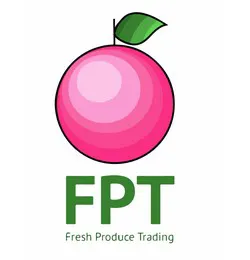Chile is depending for its cherry exports on China. Camila Borquez Maldifassi from Chile works as an independent service provider in the fresh produce industry. She has realized that since Covid, location is less important and people can work where their computers are. “I am now representing international companies from Canada, China and Europe. After feedback and support from people in the industry, I had the courage to start my own venture. I am excited and looking forward to a successful Chilean Summer fruit season,” says Camila enthusiastically.
Planning for the next year’s Southern Hemisphere Winter Season, Camila is looking at citrus and kiwifruit from Chile and other markets for Canada, Europe and China. Her vision is to to be able to provide excellent quality options for various products all year round.
At the moment, she is focusing on the upcoming berry campaign and Summer fruit season from Chile. This includes cherries, blueberries, white flesh nectarines and sweet plums.

“Freight costs have had a huge impact on the final allocation of our fruits, as well as uncertain transit times for long distance trips, these are the main issues that need to be considered when deciding on a distribution market”, comments Camila. “The Chilean cherry season started around week 42. We had a good Spring season with moderate temperatures, and there is a lot of fruit on the trees. The volume that is projected is almost a 25% increase compared to last year’s season.”
The reason for the increase is good Spring weather, and new cherry orchards coming into production. The season is short this year, with China’s Spring festival starting on January 21.
“Shipments will have to be completed between week 47 and 50 to receive the best market prices. After the Spring Festival, the price will collapse”, says Camila. “In Chile, production is very concentrated. The highest volumes will enter the market between week 48 and week 1. The problem is that 30% of the crop will have to find a better market or shipped to China arriving after Chinese New Year with uncertain prices. We do not know how prices will develop this year. The market will be flooded between week 49 and 52. The possible closure of the port of Guangzhou due to zero-Covid policy puts a lot of pressure on the rest of the ports in China. We might face again delays.”
She continues: “Last season's problem was the transit time and delays with cherries arriving late, with very low returns or even negative. This season the industry is organizing to ship more via charter freights vessels on the so called Cherry Express. We hope there will be fewer disruptions than last year. We've already made some bookings for week 48, 49 and 50. We will not ship earlier because there will not be much early fruit this season. Everything is a little late, one or so week. All shipments after week 50 are risky, as they arrive just before or during Chinese New Year week.”
This season the Chilean Cherry Committee is actively looking for other markets to mitigate the risks of an early Spring Festival. Regions that Chilean exporters are looking at include Canada, other Asian markets including in Southeast Asia and the US. Europe is complicated with lower consumption due to high inflation and high food costs .
“In conclusion, although China is the most important market for Chilean cherries, the last three seasons were challenging due to tight Covid restrictions and Logistic issues, this is why we need to diversify from this market. We need to see what the impact of the early Spring Festival will be this season as 30 to 35% of our Cherries will need to find another market or be sold in China under uncertain market conditions.”
 For more information:
For more information:
Camila Borquez Maldifassi
Email : Camilaborquez@freshproducetrading.com
